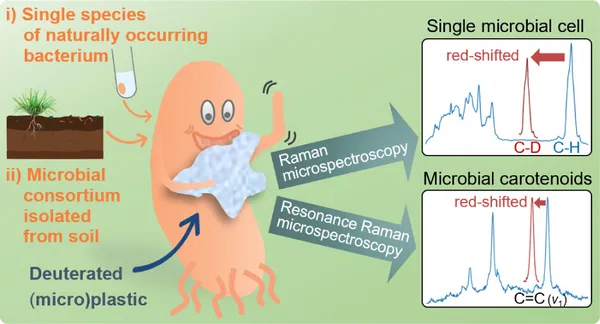New Publication in Analytical Chemistry

Kara Müller, Martin Elsner, Anna E. Leung, Hanna Wacklin-Knecht, Jürgen Allgaier, Maria Heiling, Natalia P. Ivleva*
Analytical Chemistry 2025, https://pubs.acs.org/action/showCitFormats?doi=10.1021/acs.analchem.4c05827&ref=pdf
Abstract
The ubiquitous use of plastics demands thoughtfulness about their fate in the environment. Biodegradability is, therefore, a prerequisite for the future use of plastics in many applications, including agriculture. Here, we bring forward stable isotope (resonance) Raman microspectroscopy at the single-cell level to broaden the mechanistic understanding of microbial degradation of (micro)plastics in natural systems. We selected perdeuterated d-polylactic acid (dPLA) as model plastic, synthesized from d-lactic acid-d4, via enantioselective, biocatalytic reduction of pyruvate-d3. With dPLA in hand, we traced the deuterium label during incubation experiments into microbial biomass using C–D vibrations (appear in the Raman-silent region of undeuterated biomass, 2050–2300 cm–1). The 2068 cm–1 C–D band was indicative of strongly deuterated lipids enabling the detection of metabolic differences during incubation with dPLA (i.e., stronger lipid and weaker protein deuteration) compared to glucose-d12 and D2O as alternative D sources. Single-cell analysis was the key to detecting phenotypic heterogeneity and classifying cells of the naturally occurring bacterium Sphingomonas koreensis in two clusters: one showed a significantly stronger deuteration level than the Escherichia coli control, whereas the other was nonlabeled. The deuterium label could even be detected in the strong resonance Raman signal of carotenoids, highlighting the potential for high throughput technologies like imaging and cell sorting. To further demonstrate the transferability to environmental samples, the experiment was repeated with soil bacteria isolates, and deuterium uptake from dPLA into microbial biomass was observed after 2 weeks.